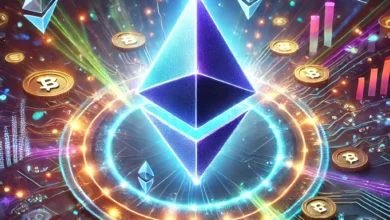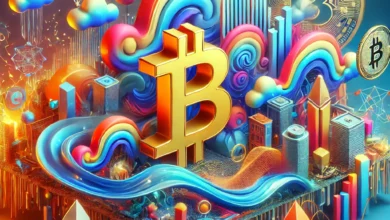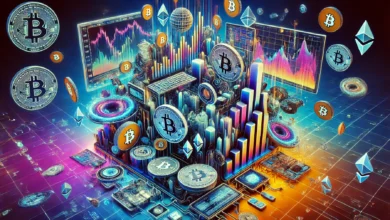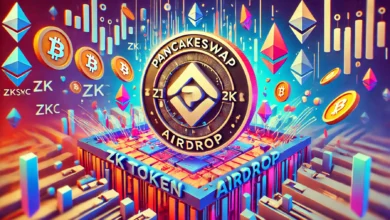Revolutionizing Digital Assets: The Integration of DeFi and NFTs
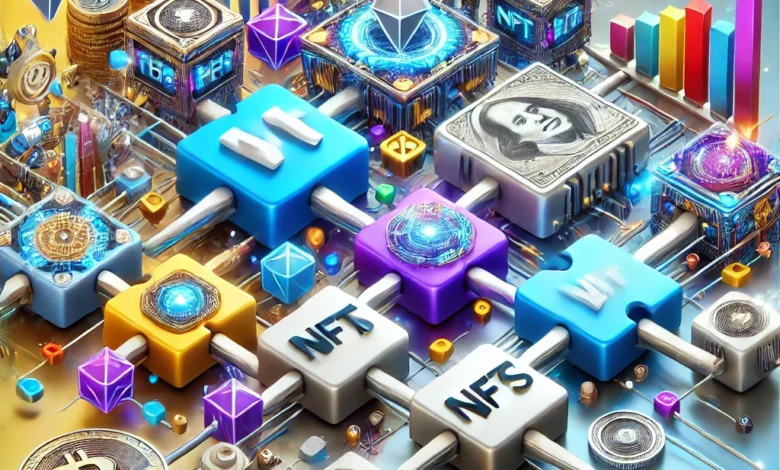
The intersection of Decentralized Finance (DeFi) and Non-Fungible Tokens (NFTs) is creating a revolutionary shift in the cryptocurrency landscape. As DeFi continues to disrupt traditional financial systems with its open, permissionless, and borderless nature, the emergence of NFTs adds a new dimension to this transformative space. This article delves into how NFTs are being integrated into the DeFi ecosystem, the potential benefits and challenges, and what the future holds for these digital assets.
Understanding DeFi and NFTs
Decentralized Finance (DeFi) refers to a suite of financial applications built on blockchain technology, aimed at democratizing access to financial services. By removing intermediaries, DeFi protocols allow for peer-to-peer lending, borrowing, trading, and yield farming, among other activities.
Non-Fungible Tokens (NFTs) are unique digital assets verified using blockchain technology. Unlike cryptocurrencies like Bitcoin or Ethereum, which are fungible and can be exchanged on a one-to-one basis, NFTs represent ownership of a specific item or piece of content, making them inherently unique. These tokens have found applications in art, music, gaming, and more, offering a way to tokenize and monetize digital creations.
The Convergence of DeFi and NFTs
The fusion of DeFi and NFTs is unlocking new possibilities in the digital asset space. Here are some key areas where this convergence is making an impact:
1. NFT Collateralization
One of the groundbreaking applications of NFTs in DeFi is their use as collateral for loans. Traditionally, DeFi platforms allow users to borrow funds by staking their cryptocurrencies as collateral. With the integration of NFTs, users can now leverage their valuable digital assets to secure loans. Platforms like Aave and NFTfi are pioneering this space, enabling users to unlock liquidity without selling their prized NFTs.
2. Fractional Ownership
Fractional ownership of NFTs is another innovative concept gaining traction. By dividing an NFT into smaller, fungible tokens, multiple investors can own a fraction of a high-value digital asset. This approach democratizes access to expensive NFTs and increases liquidity in the market. Platforms like Fractional and Niftex are leading the charge, allowing users to buy, sell, and trade fractionalized NFTs on decentralized exchanges (DEXs).
3. Yield Farming with NFTs
Yield farming, a popular DeFi activity, involves providing liquidity to protocols in exchange for rewards. By integrating NFTs into this process, platforms are creating new ways for users to earn yield. For instance, some projects issue special NFTs as rewards for participating in liquidity pools. These NFTs can then be traded or staked to earn additional rewards, adding a gamified element to yield farming.
4. Governance and Voting Rights
NFTs are also being used to represent governance and voting rights within DeFi protocols. By holding specific NFTs, users can participate in decision-making processes, propose changes, and vote on protocol upgrades. This approach enhances community involvement and ensures a more decentralized governance structure. Projects like Uniswap and MakerDAO are exploring NFT-based governance models to empower their user base.
Benefits of NFTs in DeFi
The integration of NFTs into the DeFi ecosystem offers several advantages:
1. Enhanced Liquidity
NFT collateralization and fractional ownership significantly enhance liquidity in the NFT market. By unlocking the value of digital assets, users can access funds without having to sell their NFTs, creating a more dynamic and fluid market.
2. Diversification of Assets
For DeFi users, the ability to use NFTs as collateral or earn yield through NFT-based rewards adds a layer of diversification to their portfolios. This diversification helps mitigate risk and provides new opportunities for generating returns.
3. Increased Accessibility
Fractional ownership lowers the barrier to entry for high-value NFTs, making it possible for more investors to participate in the market. This democratization of access aligns with the core principles of DeFi and fosters a more inclusive financial ecosystem.
4. Innovative Financial Products
The fusion of DeFi and NFTs is driving the creation of innovative financial products that cater to the evolving needs of users. From NFT-backed loans to yield farming with NFT rewards, these products offer novel ways to engage with digital assets and DeFi protocols.
Challenges and Risks
While the integration of NFTs in DeFi presents exciting opportunities, it also comes with its share of challenges and risks:
1. Valuation and Volatility
Valuing NFTs can be challenging due to their unique nature and the speculative nature of the market. This volatility poses risks for both borrowers and lenders in NFT collateralization scenarios, as the value of the collateral can fluctuate significantly.
2. Regulatory Uncertainty
The regulatory landscape for DeFi and NFTs is still evolving. Uncertainty around regulations and compliance can create challenges for platforms and users, particularly in terms of legal frameworks and tax implications.
3. Security Concerns
As with any digital asset, security is a paramount concern. Smart contract vulnerabilities, hacks, and exploits can lead to significant losses. Ensuring robust security measures and conducting thorough audits are crucial to mitigating these risks.
4. Market Fragmentation
The NFT market is highly fragmented, with numerous platforms and standards. This fragmentation can create interoperability issues and hinder the seamless integration of NFTs into DeFi protocols. Efforts to standardize and harmonize the market are essential for long-term growth.
The Future of DeFi and NFTs
The convergence of DeFi and NFTs is still in its nascent stages, but the potential for growth and innovation is immense. As the technology matures and the ecosystem evolves, we can expect to see more sophisticated use cases and applications emerge. Key areas to watch include:
1. Cross-Chain Interoperability
Efforts to enable cross-chain interoperability will play a critical role in the future of DeFi and NFTs. By allowing assets to move seamlessly between different blockchains, users will benefit from greater flexibility and access to a wider range of opportunities.
2. Mainstream Adoption
As awareness and understanding of DeFi and NFTs grow, mainstream adoption is likely to follow. Increased participation from institutional investors, artists, and content creators will drive demand and spur further innovation in the space.
3. Enhanced User Experience
Improving the user experience is essential for the widespread adoption of DeFi and NFTs. User-friendly interfaces, simplified onboarding processes, and comprehensive educational resources will help onboard new users and foster long-term engagement.
4. Regulatory Clarity
As regulators around the world gain a better understanding of DeFi and NFTs, clearer regulatory frameworks are expected to emerge. These frameworks will provide guidance and protection for users while fostering innovation and growth in the industry.
The integration of NFTs into the DeFi ecosystem is transforming the way we interact with digital assets. By unlocking new opportunities for liquidity, diversification, and innovation, this convergence is paving the way for a more inclusive and dynamic financial landscape. While challenges remain, the potential benefits far outweigh the risks, making DeFi and NFTs a compelling frontier for the future of finance. As the ecosystem continues to evolve, staying informed and engaged will be key to navigating this exciting new paradigm.
